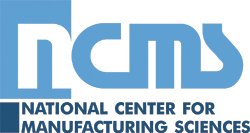Historical Articles
June, 1953 issue of Plating
MAIL BOX
Subject: Bureau of Standards
DEAR SIR:
The demand for the resignation of Dr. Allen V. Astin, Director of the Bureau of Standards, and the reason given is cause for alarm in every technical society in this country. Secretary of Commerce Weeks is apparently completely ignorant of the duties of the Bureau of Standards and had been greatly misled and ill advised. During the past twenty-three years, as a member of the Baltimore-Washington Branch, A. E. S., I have been closely associated with many members of the Bureau staff and have always understood that the Bureau does not test products for any manufacturer, but only at the request of other departments of the Government.The charge of bias strikes Dr. Astin only indirectly because he is the head of the Bureau and must accept the responsibility for all its actions. The full force of this accusation falls on all the employees of the Bureau. A more effective method of destroying the usefulness of the Bureau could not be devised by man. I refuse to believe this was intentional, but the result is the same.
It must be admitted that the administration is facing great difficulty in placing men loyal to its program in key positions and that such replacements are of vital necessity to the efficient operation of our government. Where, however, does the Bureau of Standards fit into any change of policy? Do units of weight and measure change when a new party is elected? Should Federal specifications be changed to fit the party line? Will aluminum now deposit from aqueous solutions under a Republican administration?
The problem of restoring the Bureau to the position it has held for years will be difficult but must be done. Nothing less than a complete public investigation of all activities of the Bureau by a group of competent scientists will suffice. A halfhearted investigation that whitewashes the Bureau, the Secretary of Commerce, or both, will not restore public confidence.
It is my considered opinion that the American Electroplaters’ Society should demand a full investigation of this case and request that it be permitted to name one member of the investigation committee.ARTHUR G. PIERDON
Subject: A Reply lo Pinkerton’s Paper on Rinsing
DEAR SIR:
I have read with considerable interest Mr. Pinkerton’s paper on rinsing and would like to cite several points it brings up which, though academic in nature, merit discussion.At the outset I should like to categorically assure those interested that they can safely use my approximate equations 2 and 161 and even the more simple approximation to be found in the Platers’ Guidebooks2, in connection with all rinsing and water flow problems, provided they are used within the limits of the assumptions made in deriving them. They are satisfactory when used within these limits and do not give “impossible” results. Furthermore, the master equation on page 8013 which is in itself only a first approximation to the truth will never give impossible results and it is on the basis of experimental data, the most accurate equation proposed to date.
The first point raised is that in the two approximations, as Q, the flow rate approaches zero, the equilibrium concentration in the rinse tank becomes impossibly large. The second point raised is a restatement of the first one so that both will be answered in the same way:
The two approximations were derived on the assumptions that first, the dragout volume per unit time would be of a smaller order of magnitude than the volume of the rinse tank, that is b/V is negligible as compared to unity and second, that the dragout volume per unit time is of a smaller order of average about 30 per cent lower or rather, that the equilibrium value obtained by them was equivalent to those in a tank with a 30 per cent higher flow rate.
It is a pity that these experimenters did not use a smaller sized tank with the same flow rate. If they had, the chances are they would have found an even lower equilibrium value. The question then arises, why should the tank size influence the height of the equilibrium curve when a materials balance shows that it does not? The answer is, of course, that the materials balance as given by Pinkerton’s No. 3 equation, is not balancing all the materials! The true story is in actuality a very complex one involving Reynold’s Number, laminar and turbulent flow, in which a shape and size factor make important contributions. This writer hopes to prepare a paper on this subject in the near future. In the meantime the design equations originally proposed by the writer may be safely used, as long as they are used judiciously.
REFERENCES
1. Plating 36, 798 (1949) 915, 1130.
2. Plater’s Goidebook, 1951.
3. Plating 36, 8, 801 (1949).
4. Mohler & Sternisha, Metal Finishing 44, 58, 1946.JOSEPH B. KUSHNER
Subject: Determination of Cadmium by Ferrocyanide Titration
DEAR SIR:
I am very grateful to Saubestre for calling my attention (in his letter which was published in the January issue) to the rather serious error in the factor given for cadmium which arose as he assumes, from considering that the zinc and cadmium reactions are similar. It must be admitted that on the very few occasions when the author has seen his particular method described in the literature, no reaction was given, the inference being that it was similar to that for zinc.Regarding the “zero correction” this may be less serious than appears at first sight if the standardization of the K4Fe(CN)6 is carried out under similar conditions to the titration of the samples. The error in that case will only be appreciable if the volume of the reagent differs considerably from that taken in the standardization against metallic zinc. In the book it is suggested that for the standardization, internal indicators are employed and Saubestre is therefore correct in calling attention to the “zero correction”. This correction, together with the errors inherent in all titrations with external indicators condemns the method except for routine control purposes.
The author well remembers that at the time of writing, there was some hesitation over the inclusion of the ferrocyanide method for either zinc or cadmium, the final decision being taken on the grounds that apart from the electrolytic method (favored by the author) there were no simple and reasonably accurate methods available for the determination of either of these metals in the presence of the usual impurities associated with them in electroplating solutions.
Since reading Saubestre’s letter it has been decided to attempt to apply the electrometric end point to this particular titration; this would eliminate both the “zero correction” and the difficulties in using external indicators. It would also serve to establish the true value of the Zn-Cd factor.
It does appear from the first two references quoted by Saubestre, dated 1900 and 1913, respectively, that this method for cadmium has fallen into disuse probably due to its limited application in the presence of other metals. It would be interesting to hear if any recent work has been done on this reaction.
I am greatly indebted to Saubestre for offering this most constructive criticism, and for taking the trouble to carry out the work necessary to produce the facts and figures quoted in his letter. It is only as the result of helpful suggestions of this nature that a book of this type can be kept up to date and increase in value in any future editions. Saubestre’s suggestions and conclusions will certainly be acted upon if and when the author is called to revise the work.
Very truly yours, K.E. LANGFORD
 |
 |
 |
 |
 |
| Home | Subscribe | Regulations | Compliance Assistance | News | Resources | Resource Locators | Directories | Online Training | About | Search | NASF.org |
The information contained in this site is provided for your review and convenience. It
is not intended to provide legal advice with respect to any federal, state, or local regulation.
You should consult with legal counsel and appropriate authorities before interpreting any
regulations or undertaking any specific course of action.
Please note that many of the regulatory discussions on STERC refer to federal
regulations. In many cases, states or local governments have promulgated relevant rules and
standards
that are different and/or more stringent than the federal regulations. Therefore, to assure full
compliance, you should investigate and comply with all applicable federal, state and local
regulations.

